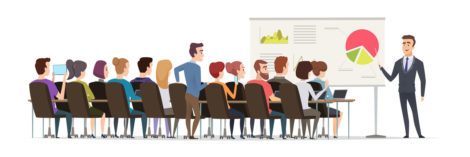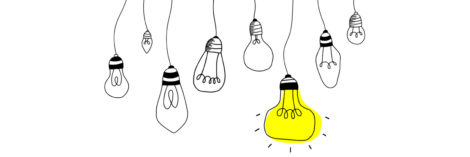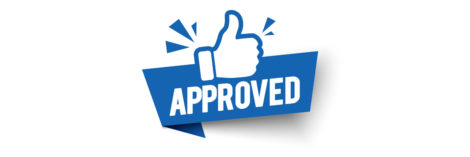This week, we offer a particular podcast. Today, we discuss the impact of the COVID-19 on a well-known media of the French and German-speaking countries: The television channel, ARTE. Valentin Duboc, Marketing Director at ARTE, talks to us about the stakes and impacts of the health crisis on ARTE’s operating methods and audience figures. This podcast completes our feature article on the effects of COVID on the media.
Summary
- Chapter 1: the significant elements of the COVID crisis for ARTE
- Chapter 2: reaction to the COVID crisis and market shares
- Chapter 3: management of the proposed contents
- Chapter 4: the impact of the COVID on the IT infrastructure at ARTE
- Chapter 5: development prospects for ARTE
- The IntoTheMinds podcasts
Key points to remember
- Stopping the live evening newscast
- The phenomenal growth of the audience
- The increase in the number of accounts (SSO or Single-Sign-On) on the platform
- 95% of staff switched to teleworking within 48 hours.
Chapter 1: The significant elements of the COVID crisis for ARTE
Although the lock-down had not yet been announced, ARTE’s managers and directors wanted to give priority to maintaining the channel’s broadcasting and live broadcasts, especially the newscasts. The possibility had then been raised of having to stop ARTE Junior Newscast (in the morning), or even the midday edition. However, the shock was total when the evening news had to be cancelled.
The COVID crisis did not only have harmful effects because audio-visual consumption increased sharply, resulting in particular in an explosion in the number of subscribers to ARTE’s digital platform. The Franco-German channel thus exceeded one million subscriptions. This performance is remarkable because there is no mandatory account registration (Single-Sign-On or SSO) at ARTE. For more information on this subject, please refer to our analysis of SSO in the context of public service media and the relationship between SSO and customer experience.
For Arte, I think that the most memorable event […] was, unfortunately, the closure of the live newscast at the very beginning of the health crisis.
Chapter 2: reaction to the COVID crisis and market shares
Anticipation: the main difficulty encountered with the announcement of the lock-down
The announcement of the lock-down has led to new thinking in personnel management. While the media are often in reaction (to the news), anticipation has become the priority. Good planning of the interventions of the various parties (journalists, technical teams) was necessary to avoid contamination in the studio or the control room. Despite all these efforts, ARTE deplored about forty cases of COVID (“no serious cases”, Valentin Duboc reassures us).
Responsiveness: a precautionary approach to get back on track
The diffusion of the newscast quickly resumed outside the walls of ARTE with autonomous, homogenous teams, which did not cross each other, to avoid contamination. These same teams were doubled to be able to react quickly and to ensure that the channel could broadcast its content without any clashes.
[We] doubled the teams on each edition of the newscast to make sure that if there was ever a case of COVID in one group, we could change the whole team overnight.
ARTE: coronavirus and development
On all levels, ARTE recorded figures never seen before, whether, in terms of audience, accounts created on the website or interactions with the community.
Even traditional broadcasting has seen audience records. This development was also supported by a redesign of its website homepage to make it more fluid and editorially better.
Some figures concerning ARTE in 2020
- More than 10% audience share on digital with Skirt Day
- Several weekends with more than 10 million videos viewed (4x more than the average)
- Varied content viewing: documentaries, films, digital programmes, etc.
- More than 1 million new ‘mon Arte’ accounts were created, the media’s loyalty programme, which had fewer than 600,000 subscribers at the end of 2019
- 3x more comments left by Internet users on all communication channels
- Growth of the European audience: more than 20% of the audience outside France-Germany
- A mix of new users and profiles already registered before the lock-down but who would spend more time on ARTE.
Chapter 3: Management of the contents
As you may have noticed, during the lock-down, some channels have addressed the lack of content by retrieving programmes from their archives (something we already noted in our analysis of the media and the COVID). ARTE did not exhibit these symptoms. Indeed, Valentin Duboc explains that the media has a large stock of content which is produced according to its own (editorial) logic.
Arte advocates long time, analysis, investigation. The problems of [content] production in Europe have not had a direct impact on us because our programmes are delivered relatively early in relation to their broadcast dates.
ARTE’s editorial orientation is, therefore, precise. For example, sporting events are not covered. Bans and cancellations of such events have consequently had no impact on the Franco-German media.
Nevertheless, specific challenges remain essential. The production, filming and delivery of particular programmes, series and other future content, had to be interrupted. It will therefore be a question of dealing with a shortage that will only be felt in the second half of 2020 and up to 2021.
The impact of home-working on the content proposed by ARTE
As in many companies, the switch to home-working has turned work habits upside down. “I think it prompted us to talk to each other a little more, between departments that spoke a little less to each other. We set up a small daily video editorial conference with all the programme units, almost all the managers. This enabled us to make a programme very close to the news, perhaps more than what we would have done in normal times”. So, the COVID crisis has not only had its downsides as it has indirectly helped to strengthen the links.
Advertising and media management
The advertising campaignes were very heavily impacted, for ARTE, as for many companies. An evident decline was felt in the traditional media (poster campaigns, print media, and so on) and only the digital media were able to resist.
There was an urgent need to rethink [advertising campaigns] and switch more and more to digital.
Customer relations management
ARTE subcontracts the management of its customer relations and had to take over this task at short notice during the health crisis. Indeed, the supplier in question had to close its sites. Once again, this operational challenge turned out to be a godsend as it allowed the teams to reconnect with their audiences.
It was interesting because everyone realised that it was an exciting activity to interact with our audience. I think it was also exciting for the audience who probably felt a kind of freshness in interacting with the channel.
Chapter 4: the impact of the COVID on the IT infrastructure at ARTE
Increases in server loads depending on the audience and the number of users is well known to the media, and this has not been particularly difficult to manage, nor has it required large investments for ARTE. On the other hand, putting all (or almost all) of the media’s employees to home-working has implied much more substantial changes.
Instead, home-working has involved an increase in infrastructure and virtual servers to enable all employees to work remotely.
The digital and digital transformation, as well as investments in IT, are part of the critical points of growth and the future for Valentin Duboc, be it for ARTE or other companies active in different sectors and industries.
The questions to be asked as a public media are preferably oriented towards investments, subsidies, and how to use them efficiently.
Chapter 5: development prospects for ARTE
Valentin Duboc, first of all, mentions the desire to expand and to offer ARTE’s programmes beyond the French and German-speaking borders. In another analysis of the Netflix phenomenon, we pointed to ARTE as a model to be imitated to create a real alternative. The medium already offers programmes with subtitles in other languages.
We are in partnership with the European Commission [to] offer subtitled versions of part of our offer in English, Spanish, Polish and Italian. This allows us to reach about 70% of Europeans in their mother tongue.
The level of quality that ARTE sets itself requires manual translations to be carried out. The use of speech-to-text algorithms and machine translations are, therefore, not on the menu.
Arte is a cultural channel with a high level of editorial standards, and this ambition must be reflected in all our activities and in all the services we provide. If a web user or viewer calls us and the person answering the phone has a little German accent […] and makes mistakes, it’s not a problem at all, and it’s even charming, it’s just like us. If, on the other hand, the same person sends us an e-mail and [we reply with German] full of mistakes, then it becomes a real problem.
A podcast to help you develop your start-up
In 2020 we are changing the format of our podcasts. The aim is to help you develop your start-up by providing you with relevant information on specific topics.
Our podcasts are now divided into chapters of +/- 3 minutes. Each chapter is dedicated to a specific theme or development phase. You can therefore listen to the entire podcast or choose to listen to only part of it by directly selecting the part that interests you the most.
Illustration images: shutterstock
Posted in Non categorizzato.





